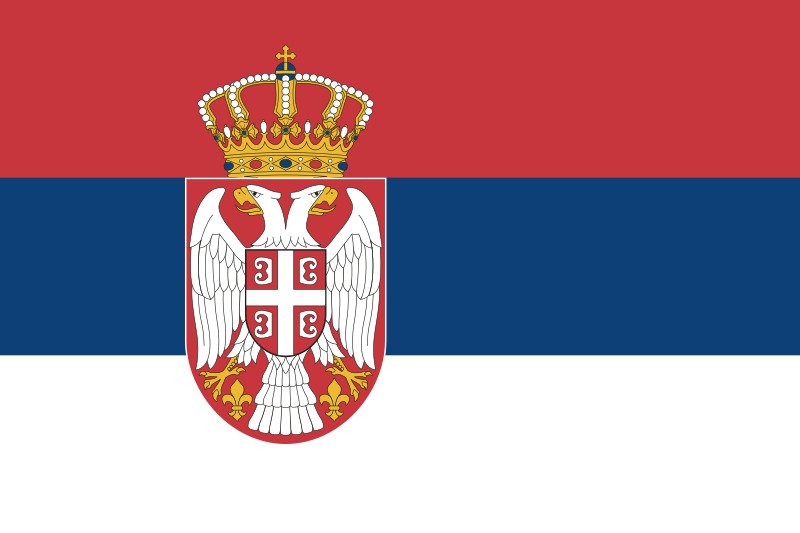Niš located in the southern part of the country, is a significant cultural and economic hub. It sits at the crossroads of Balkan and European routes, making it a key transit area. With a population of approximately 260,000, Niš is one of Serbia‘s largest cities. Its history stretches back to ancient times, as it was originally founded by the Celts in the 3rd century BC and later became a prominent Roman military base. Niš is also notable as the birthplace of Constantine the Great, the first Christian Roman Emperor. Over the centuries, it has been influenced by various empires, including Byzantine, Ottoman, and Austro-Hungarian, contributing to its rich and diverse cultural heritage. Lets see a few things.
Niš Fortress, a prominent historical landmark in Niš, Serbia, stands as a testament to the city’s rich and diverse past. Built in the early 18th century by the Ottomans on the foundations of earlier Roman and Byzantine fortifications, it is one of the best-preserved fortresses in the Balkans. The fortress spans over 22 hectares and is surrounded by massive stone walls and gates, offering a glimpse into its strategic military significance. Inside, visitors can explore remnants of Ottoman architecture, such as the Bali-bey Mosque and Hamam, as well as ancient Roman ruins. Today, Niš Fortress is a cultural hub, hosting various events, concerts, and festivals, while also providing a scenic spot for relaxation and historical exploration.
Ćele Kula, or the Skull Tower, is a haunting and unique monument located in Niš, Serbia. Built by the Ottomans in 1809 after the Battle of Čegar, the tower was constructed using the skulls of Serbian rebels who fought against Ottoman rule. Originally, there were 952 skulls embedded in the tower as a warning to others who might resist Ottoman authority. Over time, many skulls have been removed or deteriorated, but around 58 remain preserved in the chapel built around the tower. Ćele Kula stands as a powerful symbol of Serbian resistance and sacrifice, attracting visitors who wish to understand the country’s turbulent history and the fierce struggle for independence.
Mediana is an important archaeological site located near Niš, Serbia, known for its connection to Roman history. It was once a luxurious villa and imperial residence built in the early 4th century, during the reign of Emperor Constantine the Great, who was born in Niš. The site includes remains of a grand villa, thermae (baths), granaries, and workshops, reflecting the opulence of Roman aristocracy. Mediana is particularly famous for its well-preserved mosaics, intricate frescoes, and marble sculptures, offering a glimpse into the artistic and architectural sophistication of the time. Although not fully excavated, Mediana remains a significant cultural and historical landmark, attracting visitors interested in the Roman Empire’s legacy in the Balkans.
Bubanj Memorial Park, located on the outskirts of Niš, Serbia, is a poignant World War II memorial dedicated to the thousands of Serbs, Jews, and Romani people executed by the Nazis. The park’s centerpiece is the Monument to the Victims, consisting of three large, stylized concrete fists representing the defiance of men, women, and children who resisted fascism. The site also includes a pathway lined with stone slabs, symbolizing a funeral procession, leading to the monument. Bubanj Park is a significant historical site, serving both as a place of remembrance and as a peaceful green space for reflection and tribute to those who lost their lives during the war.
Niš Concentration Camp, also known as “Crveni Krst” (Red Cross), is a significant World War II site located in Niš, Serbia. Established by Nazi Germany in 1941, the camp was used to detain and execute political prisoners, resistance fighters, Jews, and Romani people. It’s estimated that over 30,000 people were imprisoned here, with many subjected to brutal conditions and mass executions. The camp is particularly notable for a daring escape in 1942, where 147 prisoners managed to break free, an act of defiance that is commemorated today. The site has been preserved as a museum and memorial, offering visitors a sobering insight into the atrocities committed during the war and serving as a powerful reminder of the importance of remembrance and resistance.
They said people from Niš are pure Serbs. Are they? Who knows, go there and see if this real, on the oldest city in Serbia, walk through the old buildings, see the history, taste the great food and enjoy the hospitality. This is Niš..







